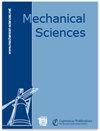基于力场的上肢康复机器人控制策略研究
IF 1.5
4区 工程技术
Q4 ENGINEERING, MECHANICAL
引用次数: 1
摘要
摘要机器人辅助康复已被证明对改善神经肌肉损伤患者的运动性能有很大作用。机器人辅助训练的有效性直接取决于治疗训练中应用的控制策略。本文介绍了一种用于残疾患者功能恢复训练的高效上肢康复机器人。然后开发了一种基于力场的康复控制策略,以诱导患者积极参与训练任务。所提出的控制策略将康复训练路径周围的三维空间划分为人类主导区域和机器人主导区域。它对训练路径周围的空间进行编码,并赋予相应的法向力和切向力;所述角度分量有助于沿着所述目标路径的移动,并且所述正常分量使用面积时间可调控制器将患者的手推向目标路径。与普通的力场控制器相比,该策略中的人机交互很容易,可以通过改变力场的范围或两种力的变化特征来快速调整,并且无论患者的手穿过两个区域,两个方向的干预都可以连续而平稳地变化。引入了基于Unity-3D环境的可视化指导,以提供可视化培训指导。最后,通过五名健康受试者的训练实验验证了所提出的控制方案的可行性。本文章由计算机程序翻译,如有差异,请以英文原文为准。
Development of a force-field-based control strategy for an upper-limb rehabilitation robot
Abstract. Robot-assisted rehabilitation has proven to be
effective for improving the motor performance of patients with neuromuscular
injuries. The effectiveness of robot-assisted training directly depends on
the control strategy applied in the therapy training. This paper presents an
end-effector upper-limb rehabilitation robot for the functional recovery
training of disabled patients. A force-field-based rehabilitation
control strategy is then developed to induce active patient participation
during training tasks. The proposed control strategy divides the
3D space around the rehabilitation training path into
a human-dominated area and a robot-dominated area. It encodes the space around the
training path and endows the corresponding normal and tangential force; the
tangential component assists with movement along the target path, and the normal
component pushes the patient's hand towards the target path using a
real-time adjustable controller. Compared with a common force-field
controller, the human–robot interaction in this strategy is easy and can be quickly
adjusted by changing the force field's range or the variation characteristics
of two forces, and the intervention in two directions can change
continuously and smoothly despite the patient's hand crossing the two areas. Visual
guidance based on the Unity-3D environment is introduced to provide visual
training instructions. Finally, the feasibility of the proposed control
scheme is validated via training experiments using five healthy subjects.
求助全文
通过发布文献求助,成功后即可免费获取论文全文。
去求助
来源期刊

Mechanical Sciences
ENGINEERING, MECHANICAL-
CiteScore
2.20
自引率
7.10%
发文量
74
审稿时长
29 weeks
期刊介绍:
The journal Mechanical Sciences (MS) is an international forum for the dissemination of original contributions in the field of theoretical and applied mechanics. Its main ambition is to provide a platform for young researchers to build up a portfolio of high-quality peer-reviewed journal articles. To this end we employ an open-access publication model with moderate page charges, aiming for fast publication and great citation opportunities. A large board of reputable editors makes this possible. The journal will also publish special issues dealing with the current state of the art and future research directions in mechanical sciences. While in-depth research articles are preferred, review articles and short communications will also be considered. We intend and believe to provide a means of publication which complements established journals in the field.
 求助内容:
求助内容: 应助结果提醒方式:
应助结果提醒方式:


